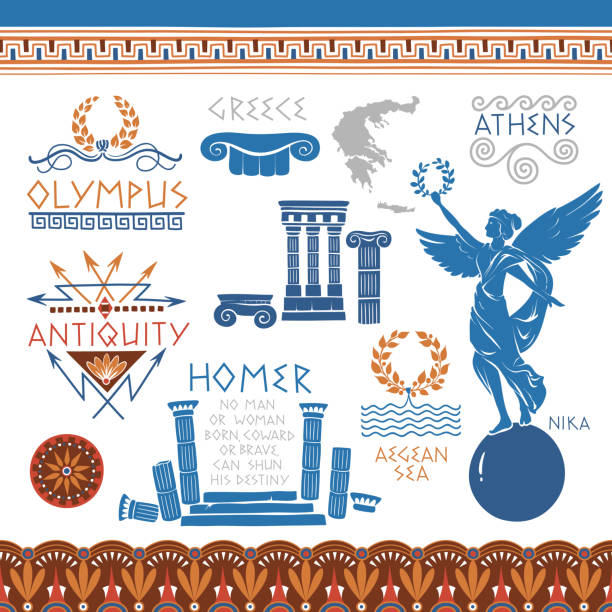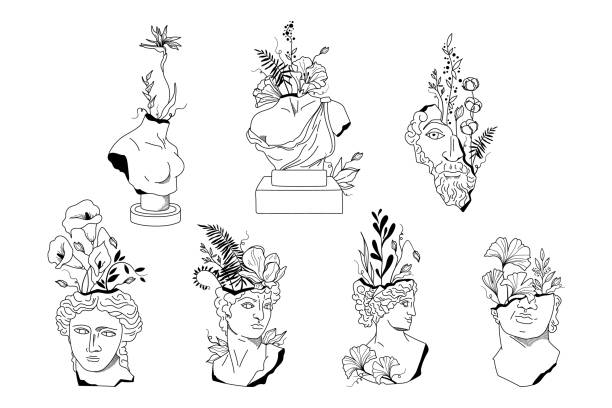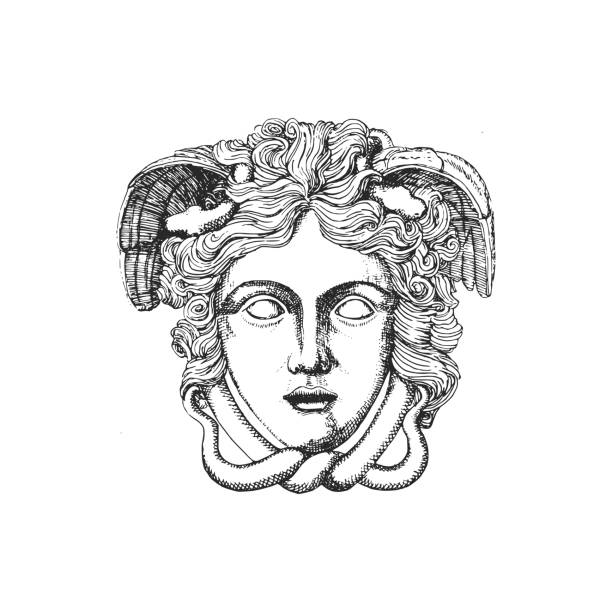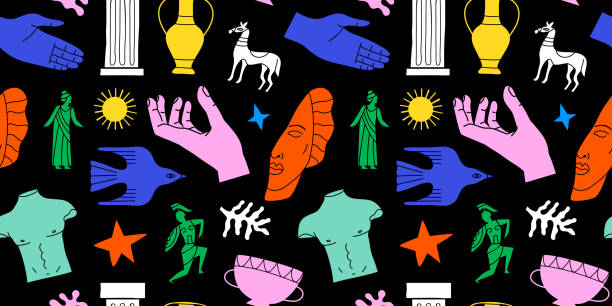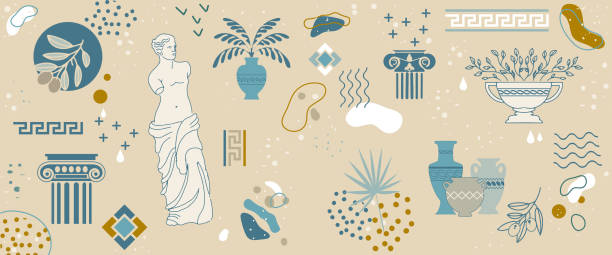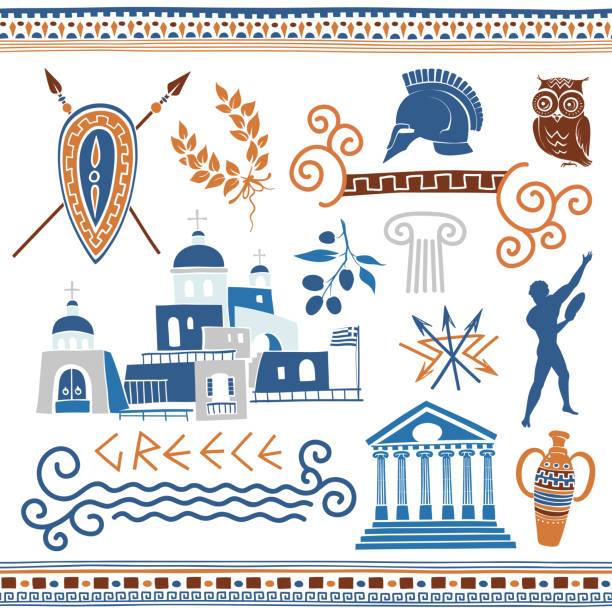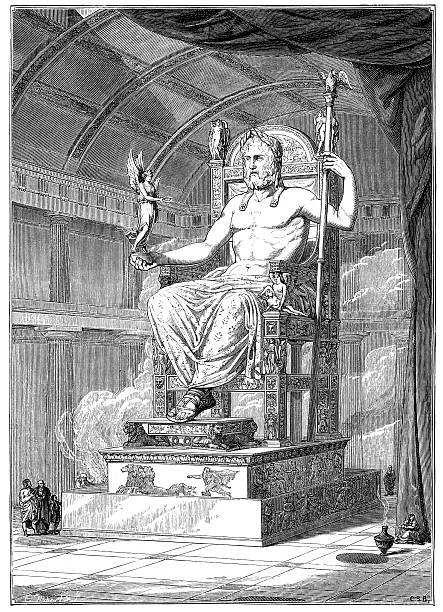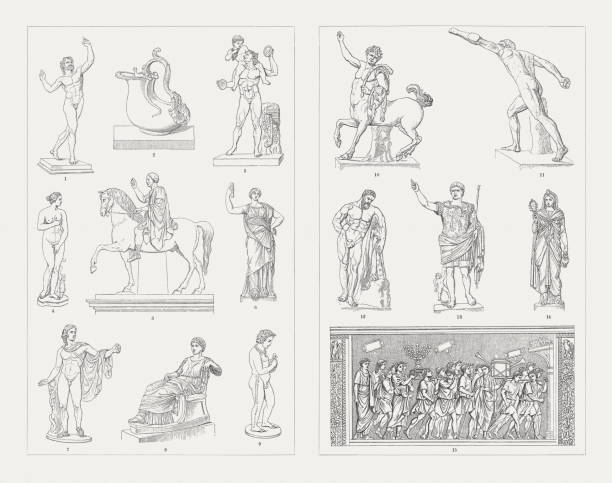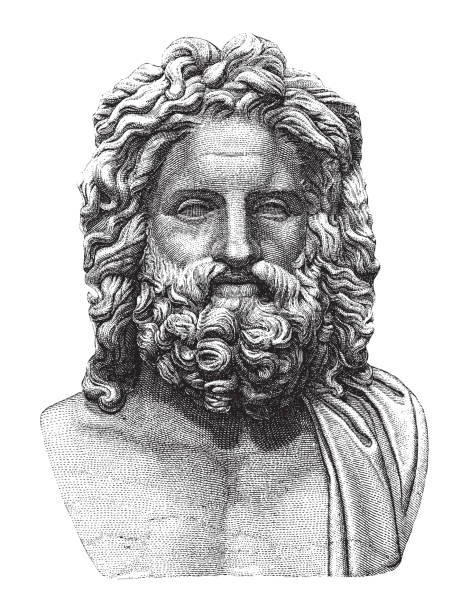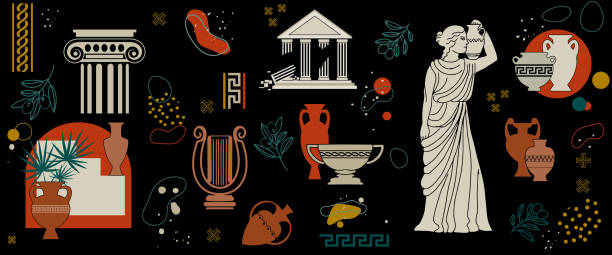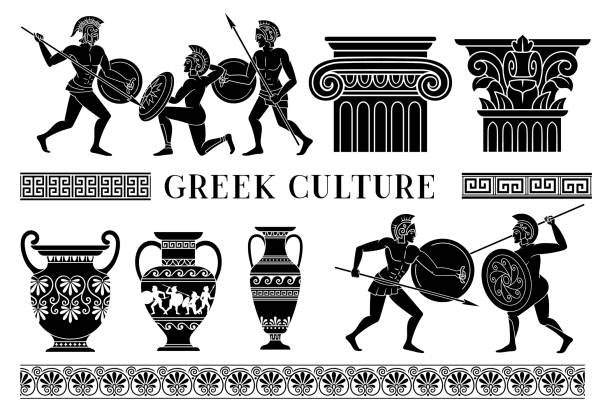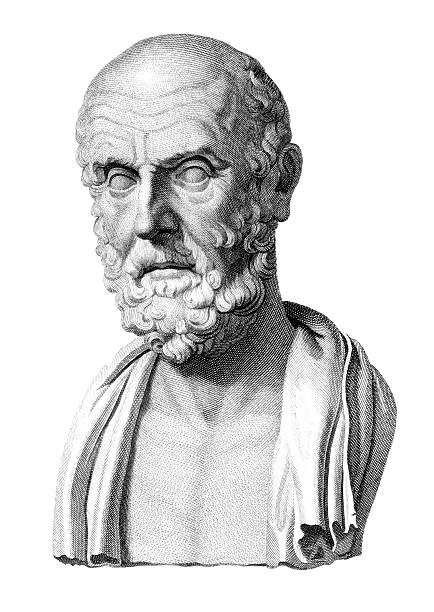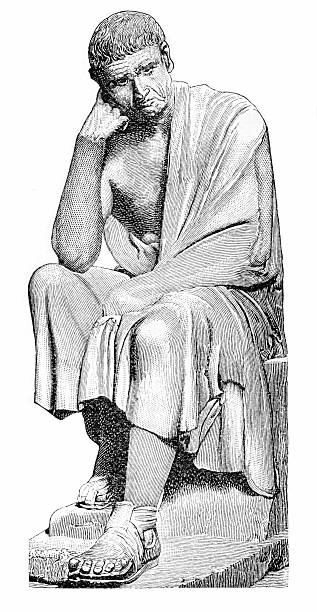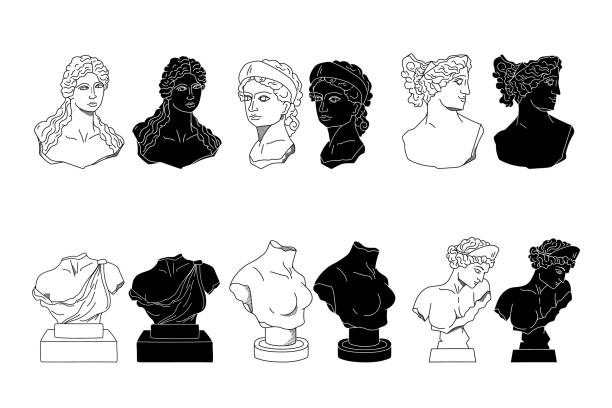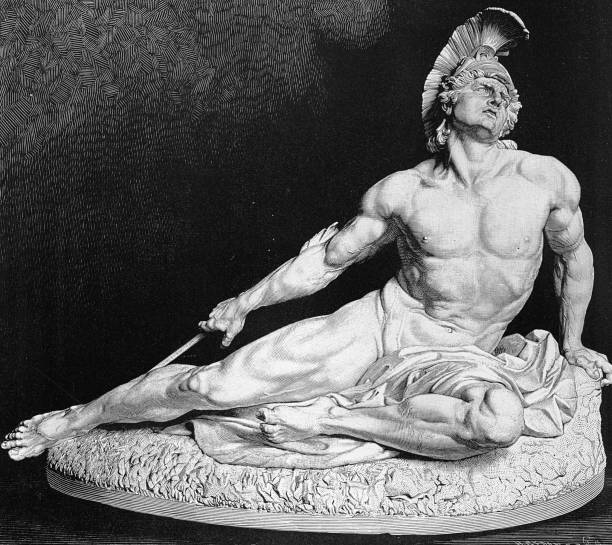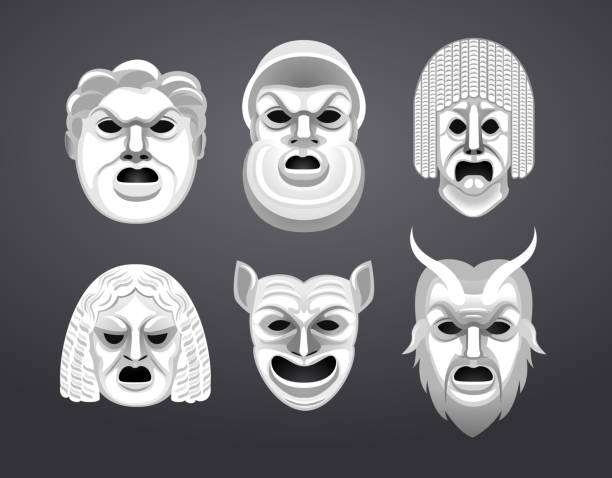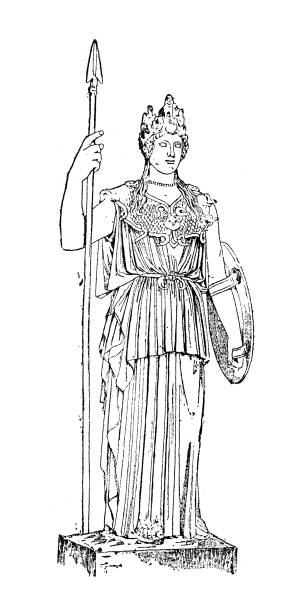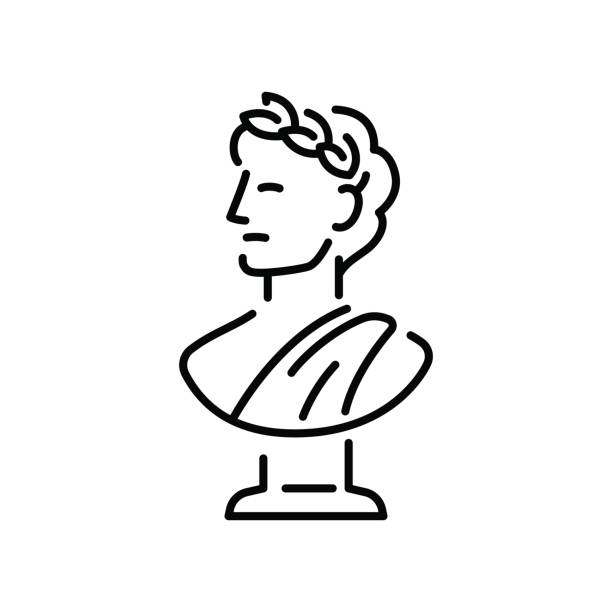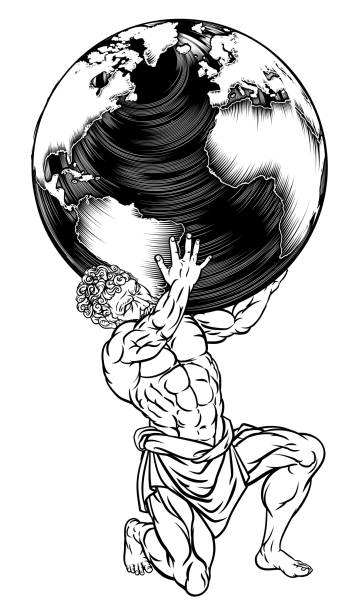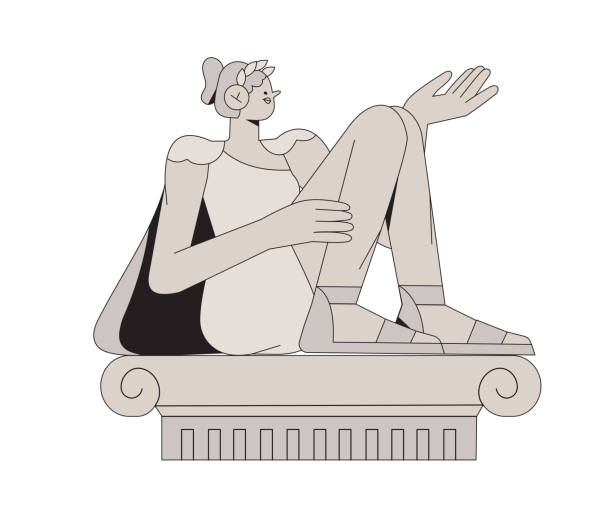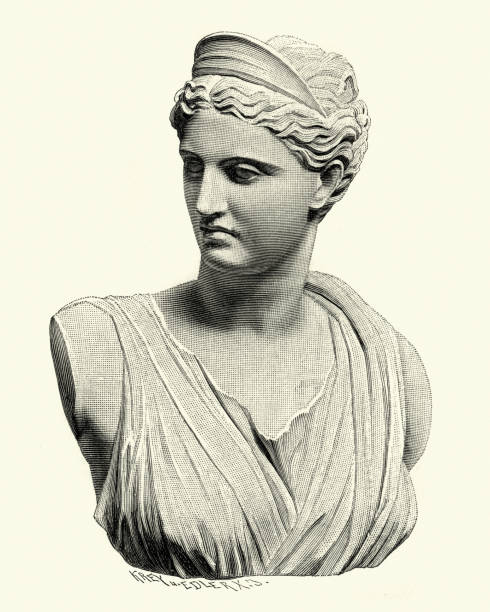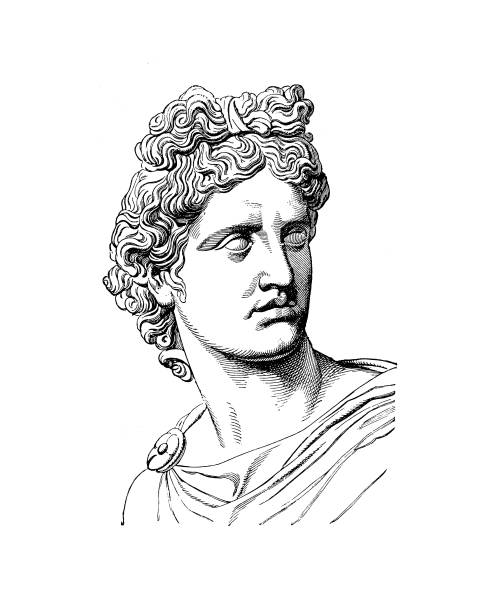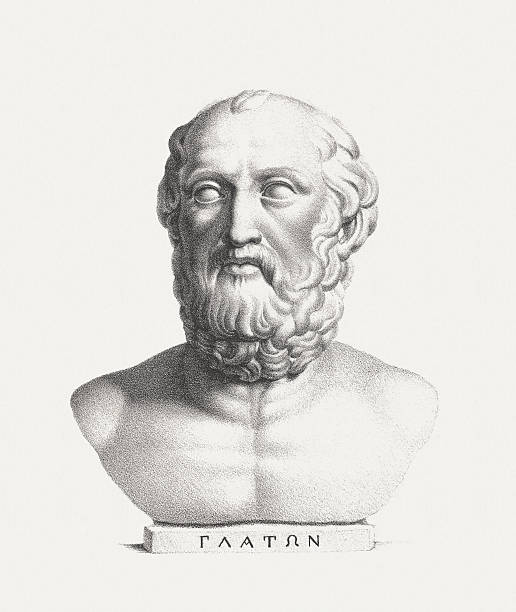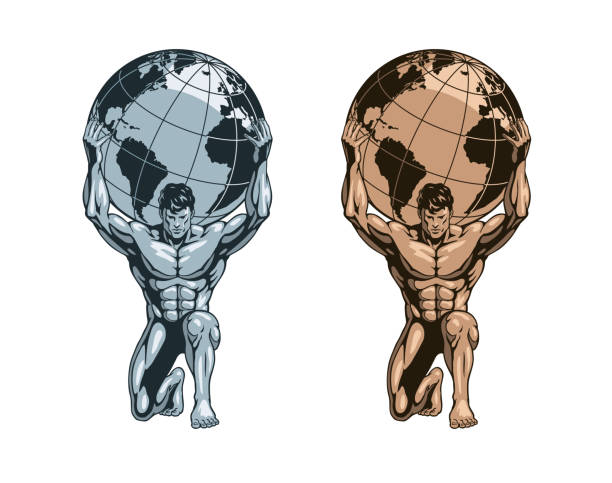
Ancient Greece Statues stock illustrations
Browse 930+ ancient greece statues stock illustrations and vector graphics available royalty-free, or start a new search to explore more great stock images and vector art.

Set of ancient greek statue and classic vintage monument shapes pattern in blue color. Greece culture antique illustration collection. Historical flat cartoon drawing bundle.
Greek culture vector illustrations. National symbols, ornaments and tag decorations.
Floral ancient Greek male and female statues isolated clip art bundle, antique sculptures with flowers black white line figures, hand drawn women bust with botanical bouquet - vector illustration
Ancient greek statue and classic vintage monument seamless pattern. Colorful greece culture background illustration. Historical flat cartoon drawing.
A set of antique ancient Greek statues, jugs, amphorae, vases and column capitals. Vector abstract background with elements of Greek ornament.
Homer - Author of the Iliad and the Odyssey. He is the greatest ancient Greek epic poets. When he lived is not exactly known. It is estimated about 770 - 700 BC. Wood engraving after an ancient bust, published in 1878.
Graceful ancient Greek statues of a goddess and a nymph, vector black white sculptures in line and solid silhouette of female figures, hand drawn women bodies isolated clip art set
Set of ancient Greek symbols, illustrations and ornaments.
"Vintage engraving from 1879 of the Statue of Zeus at Olympia. The Statue of Zeus at Olympia was made by the Greek sculptor Phidias, circa 432 BC in the Temple of Zeus, Olympia, Greece. It was one of the Seven Wonders of the Ancient World."
Greek Roman and Etruscan sculpture art: 1) Dancing Faun from Pompeii, bronze statue (Naples National Archeological Museum, Italy); 2) Wine Pot, Naples; 3) Faun with the infant Bacchus, bronze statue, Naples; 4) Medicean Venus, marble sculpture, 1st century BC, by Kleomenes (?), after the original by Praxiteles from the beginning of 3rd century BC (Galleria degli Uffizi, Florence); 5) Equestrian statue of Marcus Nonius Balbus, marble sculpture, 2nd half of the 1st century BC (Naples, National Archaeological Museum); 6) Cesi Juno, Roman marble copy of earlier Hellenistic work (Capitoline Museum, Rome); 7) Apollo Belvedere, marble sculpture, ca. 120 - 140, copy of bronze original of ca. 350 - 325 BC (Vatican Museums); 8) Agrippina the Elder (14 BC - 33), Roman marble statue (Vatican Museums); 9) Etruscan boy with a goose, Etruscan bronze statue (Dutch National Museum of antiquities, Leiden, Netherlands); 10) Statue of Young Centaur signed by Aristeas and Papias, marble sculpture, Hadrianic period 117-138 AD (Capitoline Museum, Rome); 11) Borghese Gladiator, Greek marble sculpture by Agasias of Ephesus, about 100 BC (Musée du Louvre, Paris); 12) Farnese Hercules, marble sculpture by Glykon (reproduced from the original by Lysippos), c. 216 AD (Museo Archeologico Nazionale, Naples); 13) Augustus of Prima Porta, marble sculpture, 1st century AD (Vatican Museums); 14) Egyptian goddess Isis, marble sculpture, Hadrianic period 117-138 AD (Capitoline Museum, Rome); 15) Relief from the Tituis Arch (Roman Forum, Rome). Wood engravings, published in 1897.
Vintage engraved illustration isolated on white background - Bust of Zeus (ancient Greek god) or Jupiter (ancient Roman god). King of the Gods God of the sky, lightning, thunder, law, order, justice
A set of antique ancient Greek statues, jugs, amphorae, vases and column capitals. Vector abstract background with elements of Greek ornament.
Vintage engraving of a statue by W Theed of Sappho, an archaic Greek poet from the island of Lesbos.
Vintage engraving of a Ancient Greek Athlete throwing the Discus
Greek culture set. Collection of silhouettes of men with shields and weapons. Antique dishes and columns. Warriors in helmets fight. Cartoon flat vector illustrations isolated on white background
Socrates ( c.470 - 399 BC ) was a Greek philosopher from Athens who is credited as one of the founders of Western philosophy, and as being the first moral philosopher of the Western ethical tradition of thought. Original edition from my own archives Source : Historia de los griegos 1891
Sculptor of ancient Greece creating a statue of Aphrodite.
Illustration of Lady Justice woman holding scales and sword and wearing a blindfold
Ancient Greek bust statues of goddess and nymphs, vector black white line and solid silhouettes of antique female sculptures, hand drawn women figures isolated clip art set
Mystical Goddess ancient greek statue, vector black white celestial greek bust silhouettes, antique sculptures with moon, planet and stars, fantasy hand drawn isolated clip art set
Ancient Greek and Roman art concept. Prints can be used as stickers, icons, highlights etc. Hand drawn vector illustrations set.
Homer was the presumed author of the Iliad and the Odyssey, two epic poems that are the foundational works of ancient Greek literature. The Iliad is set during the Trojan War, the ten-year siege of the city of Troy by a coalition of Greek kingdoms Original edition from my own archives Source : Historia de los griegos 1891
Ancient Greece banner tradition and culture ancient history greek helmet people greece vector illustration
Achilles is in Greek mythology an almost invulnerable hero of the Greeks (Achaeans) before Troy and the main hero of Homer's Iliad. He is the son of Peleus, king of Phthia in Thessaly, and the sea nymph Thetis. Illustration from 19th century.
Greek Theatre Mask Set Vector Illustration Cartoon.
Ancient bust sculpture of a woman framed with olive branches. Flat hand-drawn isolated vector illustrations.
Illustration of a Aristotle (384 BC - 322 BC), Classical Greek philosopher. He is one of the most famous and influential philosophers of history
Ancient Greek bust sculpture with laurel wreath. Young man head in profile, classic statue logo or icon. Simple modern vector illustration.
The Colossus of Rhodes was a statue of the Greek god Helios, erected on the Greek island of Rhodes between 292 and 280 BC. It is considered to be one of the Seven Wonders of the Ancient World. Woodcut engraving, published in 1881.
Atlas the titan from Greek mythology sentenced by the gods to hold up the sky represented by a world globe
illustration from Meyers Konversations-Lexikon 1897
Vintage illustration of Colossus of Rhodes one of the Seven Wonders of the Ancient World. The Colossus of Rhodes was a statue of the Greek sun-god Helios, erected in the city of Rhodes, on the Greek island of the same name, by Chares of Lindos in 280 BC.
Discobolus (Discus thrower) of Myron of Eleutherae (Athenian sculptor, ca. mid-5th century BC). Wood engraving after an ancient statue (Roman marble copy, British Museum, London, England), published in 1893.
In Greek mythology, Cassandra is the daughter of the Trojan king Priam and Hecuba. The god Apollo gave her the gift of divination because of her beauty. However, when she rejected his attempts at seduction, he cursed her and her offspring so that no one would believe her prophecies. Therefore, in ancient mythology, she is considered a tragic heroine who always foresaw disaster but was never heard. Such unheard warnings are called Cassandra calls. Illustration from 19th century.
Greek antique face statues of gods and heroes, vector black white line and solid silhouettes ancient Greece sculptures, Apollo mask, hand drawn isolated clip art set
Vintage engraving of Artemis, In the classical period of Greek mythology, Artemis was often described as the daughter of Zeus and Leto, and the twin sister of Apollo. She was the Hellenic goddess of the hunt, wild animals, wilderness, childbirth, virginity and protector of young girls
Illustration from 19th century.
illustration from Meyers Konversations-Lexikon 1897
19th-century illustration of Phoebus Apollo, the god of light and the sun, truth and prophecy, healing, plague, music, poetry, and more. Son of Zeus and Leto, and has a twin sister, the chaste huntress Artemis. (Belvedere, Vatican, Rome). Original artwork published in "A pictorial history of the world's great nations: from the earliest dates to the present time" by Charlotte M. Yonge (Selmar Hess, New York, 1882).
Discus thrower. Woodcut engraving after an ancient sculpture, published in 1881.
"Venus was a major Roman goddess principally associated with love, beauty and fertility, who played a key role in many Roman religious festivals and myths. From the third century BC, the increasing Hellenization of Roman upper classes identified her as the equivalent of the Greek goddess Aphrodite. In this way Venus was the consort of Vulcan. Virgil, in compliment to his patron Augustus and the gensJulia made Venus, whom Julius Caesar adopted as his protectress, the ancestor of the Roman people by way of its legendary founder Aeneas and his son Iulus.illustration was published in 1884 ""Encyclopedic dictionary""scan by Ivan Burmistrov"
Plato (Greek philosopher, 428/427 BC - 348/347 BC). Lithograph after an antique bust by Joseph Brodtmann (German-swiss engraver and publisher, 1787-1862), published c. 1830.
Antique illustration of a Pyrrhus (319/318–272 BC) was a Greek general and statesman of the Hellenistic period
Atlas or Titan holding the globe on his shoulders. Bodybuilder athlete statue, monochrome gold or bronze and silver or steel versions. Vector illustration.
Vintage engraving of Ancient greek sculptures and statues. The statue of Laocoön and His Sons, also called the Laocoön Group, has been one of the most famous ancient sculptures ever since it was excavated in Rome in 1506
Engraving From 1882 Of The Greek God Apollo Who Was The God Of The Sun And The Son Of Zeus.
Socrates (470/469 BC – 399 BC), classical Greek philosopher. Wood engraving after an ancient bust, published in 1878.
